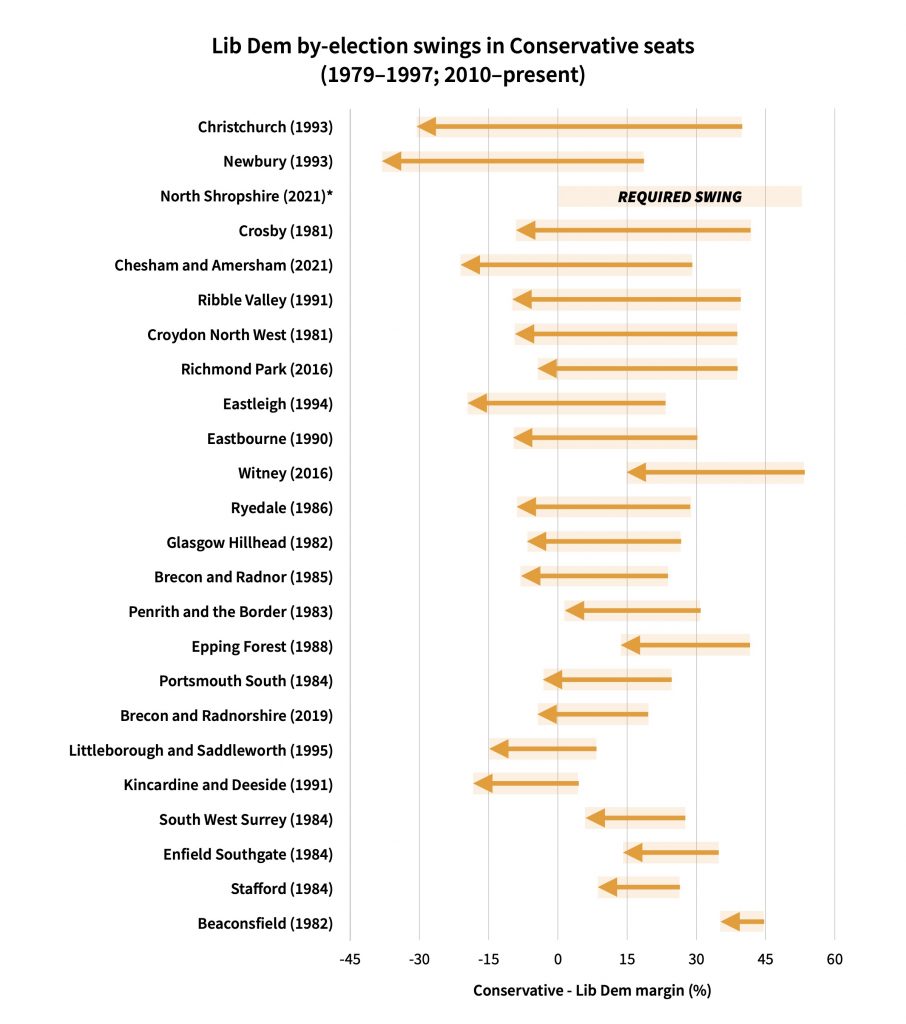Why the Tories could lose the North Shropshire by-election

In face of the chaotic last six years in British politics, it can be easy to lose sight of a constant phenomenon: governing parties do not defend by-election seats very well. Since 1979, governing parties have had to defend 65 seats in parliamentary by-elections but have only managed to win just under half of them (30).
Of these 65 seats, Conservative governments have had to defend 43, winning an even lower proportion with 14 (33%). In fact, more Liberal Democrat (including Liberal and SDP) candidates (16) have won Conservative-held seats in by-elections under a Tory government than actual Conservatives.
Ahead of the North Shropshire by-election on 16 December, I decided to inspect this data further, so I built a simple model to predict governing party vote shares in by-elections and their win chances based on the following criteria:
- Party’s previous general election vote share in the constituency
- Current government polling numbers (change vs. last election)
- Cause of the by-election (by-elections caused by the death of the incumbent tend to give slightly better results for the incumbent’s party)
Plugging the figures in for North Shropshire spits out an expected vote share of 41% for the Conservatives (with a 50% chance of it falling in the 37?46% range) and a win chance of 65%. If the reports on the ground that this seat is a two-horse race between the Conservatives and Liberal Democrats are correct, we’re looking at a ?35% chance of a Lib Dem win here.
When I started writing this article, I was ready to tip the Liberal Democrats at 5.6 (18%) on Smarkets but they have since shortened to 2.78, which equates to a 36% win probability — effectively the same price as my model — so there’s not much value left in those odds. The Lib Dem by-election juggernaut should not be underestimated, and it seems like Smarkets users have now clocked onto that.